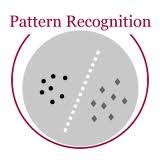项目名称: 多模态大尺度脑网络研究及对原发全面性癫痫的应用
项目编号: No.81201155
项目类型: 青年科学基金项目
立项/批准年度: 2013
项目学科: 影像医学与生物医学工程
项目作者: 廖伟
作者单位: 杭州师范大学
项目金额: 24万元
中文摘要: 脑连接网络研究是脑功能整合的核心内容。当前多模态MRI脑网络研究发现:内在脑功能连接网络、形态学结构协变网络及纤维束解剖连接网络等存在各异的拓扑模式,并且这些多模态网络间存在不同程度的耦合。基于此,我们提出大尺度脑功能协变网络方法,并拟采用图论技术,从不同的时间刻度对脑网络模式进行描绘。同时,把这种方法应用于原发全面类型癫痫患者,评价特异疾病状态下脑功能协变网络的改变,并观察其与其他模态脑网络间的耦合关系。该研究提供一个全新的脑网络研究方法,对内在脑功能连接网络与形态学结构协变网络隔阂间架起一座桥梁,补充和丰富了脑连接组学的研究谱,并加深了对不同模态间脑网络内在联系的神经机制的理解;同时,也为原发全面发作癫痫不同脑区间脑活动水平改变的关系及形成的脑网络进行全面描绘,加深对该类型癫痫网络异常的病理生理机制的理解;为癫痫大样本断面研究提供新的研究手段,为疾病的临床进展评价提供影像学标记。
中文关键词: 动态功能连接;频率依赖;功能协变网络;原发全面发作癫痫;模式识别
英文摘要: The investigation of brain connectivity networks is the core part of brain functional integration. Multi-modal neuroimagings currently provide a sophisticated and comprehensive visualization of the human brain networks. The human brain networks would mostly include temporal correlation-based intrinsic connectivity network (ICN), morphometric correlation-based structural covariance network (SCN) and diffusion tractography-based anatomical connectivity network (ACN). It has been shown that many common and some specific topological organizations exist among these brain networks. Importantly, the intimate couplings among these brain networks have been reported. Little is known about the topological organization of large-scale functional covariance network (FCN) and the coupling with networks obtained from other measures. We aimed to utilize graph theoretical approaches to investigate the organizational principles of FCN at different temporal scales. In addition, we applied FCN to detect disruptions of network organization in patients with idiopathic generalized epilepsy (IGE) and appropriate comparison groups. In the current project, we propose a new method to investigate the human brain network, FCN, which might help bridge the gap between ICN and SCN. Also, our new method may enrich the knowledge of the brain conn
英文关键词: dynamic functional connectivit;frequency-dependent;functional covariance network;idiopathic generalized epileps;multivariate pattern analysis
